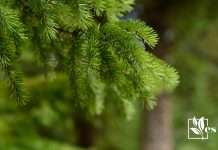As a plant enthusiast, I’ve dealt with my fair share of gardening woes, and browning geranium leaves are a common concern among fellow gardeners. Geraniums are known for their vibrant flowers and lush foliage, making an unsightly brown leaf an immediate red flag for an underlying issue. Brown leaves can be the plant’s way of telling you it needs a bit more TLC. By paying attention to the signs your geranium plant presents, you can often diagnose and remedy the problem, restoring the plant to its healthy state.

Understanding why geranium leaves turn brown requires a look into several environmental and care-related factors. Watering habits are often the culprit; both overwatering and underwatering can lead to brown foliage. Since geraniums prefer consistently moist soil, striking the perfect balance is key. Additionally, proper nutrient intake, air circulation, and temperature regulation play crucial roles in maintaining healthy geranium plants. From nutrient imbalances to pest invasions, each issue has its own set of symptoms and solutions.
For gardening novices and seasoned pros alike, ensuring optimal plant care for geraniums might seem daunting. Nevertheless, with a few simple adjustments to your care routine, you can keep these issues at bay. Keep in mind that preventive care is just as important as addressing current problems. By taking a proactive approach to plant care, you can enjoy robust geranium plants with lush, green foliage and radiant blooms.
JUMP TO TOPIC
Optimizing Geranium Care
When I grow geraniums, I focus on specific care requirements like proper watering, soil and nutrient balance, and maintaining optimal sunlight and temperature levels, which are crucial for preventing stress and promoting healthy, green foliage.
Watering Techniques
I’ve found that the key to watering geraniums is consistency and observing the plant’s response. Overwatering can lead to root rot and stress, with leaves turning brown as a telltale sign. Conversely, underwatering can dry out geraniums, causing similar browning. To prevent these issues:
- Moisture Check: Before watering, I always check the top inch of soil; if it’s dry, it’s time to water.
- Even Distribution: I ensure water reaches all roots by watering evenly around the plant.
Soil And Nutrition
Healthy soil means healthy geraniums. I aim for well-draining soil with a neutral to slightly acidic pH. An imbalance can inhibit nutrient uptake, leading to deficiency symptoms like brown leaves. My geraniums thrive when I supply them with a balanced fertilizer containing nitrogen, potassium, and potash. I apply fertilizer based on growth stage and observe for any signs of nutrient deficiency or excess.
Sunlight And Temperature
Geraniums need adequate sunlight for proper photosynthesis, which keeps leaves green and vibrant. I place my geraniums where they receive at least 4-6 hours of sunlight, as lack of sunlight can weaken them. Additionally, I protect them from extreme temperatures since both heat and frost can cause stress:
Sunlight and Temperature Tips: I shuffle my geraniums to suit the seasons, providing shade during scorching summer days and moving them indoors when frost threatens.
Addressing Common Problems
In my experience with gardening, I’ve come to understand that effectively managing diseases and pests is crucial for healthy geraniums. These troubles often manifest as brown leaves, indicating a problem below the surface that needs immediate attention.
Disease Management
Bacterial blight and root rot are common issues that can cause geranium leaves to turn brown. I find that the best course of action is to:
-
Inspect: Regularly check for telltale signs such as water-soaked spots, wilting, and stem decay.
-
Isolate: Remove and destroy affected plants to prevent spreading.
-
Implement: Use copper-based fungicides as a preventative measure, especially during damp conditions.
Avoid over-watering, as this creates an environment conducive to diseases like root rot.
Pest Control Strategies
Aphids, spider mites, and whiteflies are pests that may infest geraniums, leading to brown leaves. Reflecting on my experience, here’s what works:
-
Monitor: Keeping an eye out for pests is half the battle won; you should regularly inspect the undersides of leaves.
-
Natural predators: Introducing or encouraging ladybugs and other beneficial insects can naturally keep aphid populations in check.
-
Pesticides: For severe infestations, it may be necessary to use pesticides. I recommend organic options first, such as neem oil or insecticidal soap.
-
Maintain: Keeping geraniums healthy with proper fertilization and watering helps prevent pest infestations.
Implementing these simple yet effective management strategies can go a long way in keeping geranium leaves green and free from brown discoloration.
Practical Techniques for Maintenance
Maintaining healthy geraniums involves regular care to ensure they thrive. Pruning and repotting are two essential practices that help rejuvenate geraniums, promote air circulation, and prevent issues like browning leaves.
Effective Pruning And Repotting
Pruning is a critical step in maintaining the vibrancy of flowering plants like geraniums. I start by removing any dead leaves, which helps prevent disease from spreading and improves the overall appearance of the plant. I make sure to cut just above a leaf node to encourage new growth.
Repotting geraniums can also be beneficial, particularly when they outgrow their current container or the soil becomes depleted of nutrients. I choose a pot that is one size larger than the current one to allow for growth. This practice also allows me to inspect the root system for any signs of rot or disease.
Pruning Steps:
- Inspect geranium leaves and stems.
- Cut away any discolored, dead, or damaged parts.
- Shape the plant to promote a balanced structure.
Repotting Steps:
- Select a new pot with adequate drainage holes.
- Fill with fresh potting mix suited for geraniums.
- Carefully transplant the geranium, disturbing the roots as little as possible.











